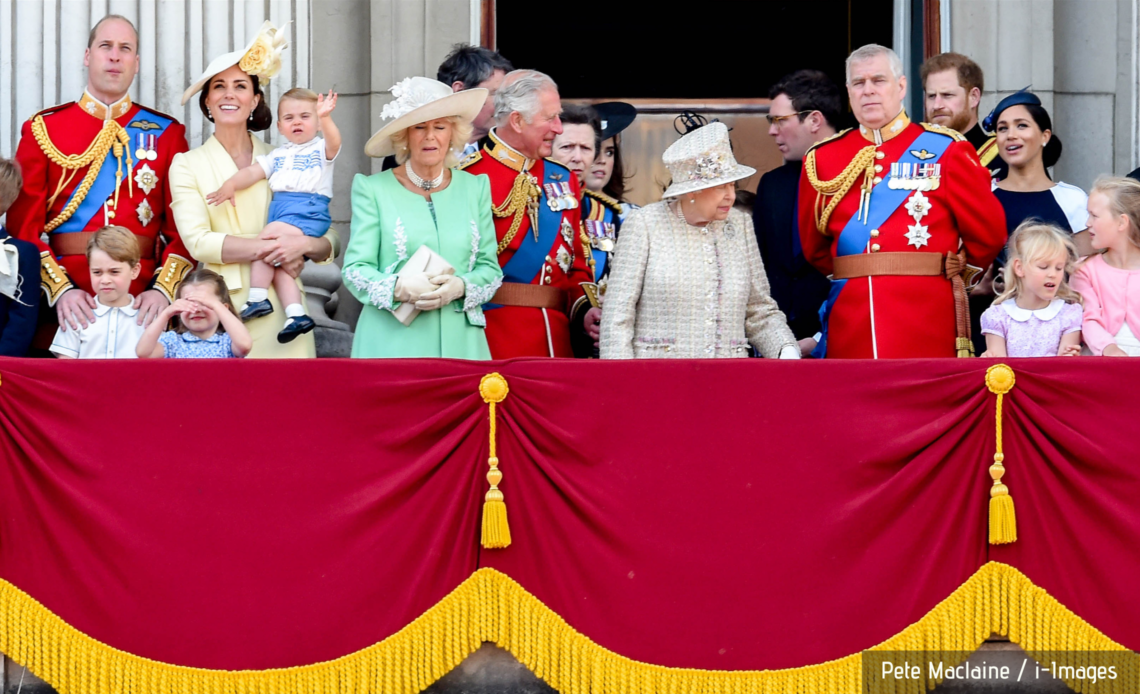
In normal times, when the whole Royal Family marches on to the balcony of Buckingham Palace at big events like Trooping the Colour, we’re greeted with a wall of Windsors, many of whom are HRHs. However, it’s not the easiest to work out who gets that style and who doesn’t because proximity to the throne doesn’t translate to automatic royal title.
Who gets an HRH and who doesn’t is all down to the founder of the House of Windsor, King George V. On December 11th 1917, he issued Letters Patent restricting the use of HRH and also sweeping away a whole host of royal styles, including Serene Highness and plain Highness. His decisions that December still rule the Windsors today. Here’s what it means in a modern context.
Children of a Monarch
All the children of a Monarch are entitled to be HRHs although most already are by the time their parent takes the throne. However, it means that if the throne passes to someone with no royal title already, their children are automatically elevated. And it’s theirs for life, so even when they lose the parent who held the throne, they retain their HRH. Unless of course, they are first in line to succeed, in which case they swap it for HM.
During the Queen’s reign that has meant that her sister was HRH Princess Margaret and that her paternal uncles and aunts were known as HRH despite their place in the succession dipping further and further as time went on.
Grandchildren of a Monarch
A Monarch’s children in the male line are automatically an HRH. That means The Queen’s sons could all claim that distinction for their children but Elizabeth II’s only daughter, Princess Anne, couldn’t.
So William, Harry, Beatrice and Eugenie are all HRHs because they are the children of sons of the Monarch. Prince Edward’s children, Louise and James, are also technically HRH but their parents announced at the time of their marriage that their future descendants wouldn’t use this royal style. However, the Countess of Wessex acknowledged in an interview in 2020 that, once her children turn 18, the decision is theirs and, although she thought it unlikely, they might revert to their actual titles of HRH Princess Louise and HRH Prince James.
Once an HRH is bestowed, it is there for good, unless the Monarch chooses to issue Letters Patent removing it. So even when the Monarch called Grandpa or Granny dies, the royal distinction remains.
So looking further afield in the Royal Family, The Duke of Gloucester is an HRH as he is the grandchild of King George V via his third son, Henry, Duke of Gloucester. The Duke of Kent, his sister, Princess Alexandra, and his brother, Prince Michael, are also HRH because their father, George, Duke of Kent, was the fourth son of King George V. All of them were relatively high up in the line of succession at birth but are now well down the pecking order.
Spouses of an HRH
When a male HRH marries, his royal style is also shared with his wife. That means that on the marriages of The Prince of Wales, The Duke of Cambridge, The Duke of Sussex, The Earl of Wessex, The Duke of Gloucester, The Duke of Kent and Prince Michael of Kent, their brides all became HRHs.
Diana, Princess of Wales was an HRH following her wedding to Prince Charles while Sarah, Duchess of York was given the title after marrying Prince Andrew. Both women lost that style on their divorces after The Queen issued new Letters Patent removing the style from a spouse once their royal marriage was ended.
Who isn’t an HRH
Princess Anne’s children, Peter and Zara, aren’t entitled to be HRHs because they are the children of a daughter, rather than a son, of a Monarch. Likewise, the children of Princess Margaret weren’t entitled to be HRHs, despite being the grandchildren of King George VI, and are now the Earl of Snowdon and Lady Sarah Chatto, despite being closer to the throne than several other HRHs.
The husbands of female HRHs are also not entitled to the style. In The Queen’s reign that means that Antony Armstrong-Jones, Angus Ogilvy, Mark Phillips, Timothy Lawrence, Jack Brooksbank and Edoardo Mapelli Mozzi have all remained without royal titles following marriages to HRHs. As things stand, when Princess Charlotte marries, her spouse won’t become an HRH although the people her brothers, Prince George and Prince Louis, wed will.
And once you get past the second generation of a Monarch’s descendants, the entitlement to an HRH disappears. The great grandchildren of a King or Queen Regnant are not HRHs – with one exception. George V ruled that the eldest son of the eldest son of The Prince of Wales was entitled to be an HRH. His granddaughter, Elizabeth II, changed that in 2013 after the rules around the succession altered. She decided that all the children of the eldest son of The Prince of Wales would be HRH as gender no longer dictated succession. The move addressed concerns that, should The Duke and Duchess of Cambridge have a daughter first, she wouldn’t get an HRH while a younger brother would, even though he would now be behind her in the line of succession.
But beyond that, there is no provision for an HRH for any great grandchildren. So Princess Eugenie’s son, August, has no royal title at all despite his mum being an HRH and Harry and Meghan’s son, Archie, is also without that royal distinction.
However, Archie and his baby sister, due this summer, will be entitled to be an HRH one day, when Charles ascends the throne. At that point, they become the grandchildren of the monarch and those rules, put in place by George V, take over once more.
The House of Windsor’s titles all go back to the man who founded it, over a century after he put them in place.

